Nội dung bài viết
Capacitors are used in industrial electrical systems, especially when there are devices that need to compensate for reactive power. In the summary below, KTH ELECTRIC will help you better understand the structural characteristics, applications of capacitor banks and how to choose the appropriate capacitor capacity.
What is a capacitor bank?
Capacitor (capacitor) is a device used to compensate reactive power, helping to increase the power factor cosφ in the power system. Capacitors work by storing and discharging electricity through two plates connected to the power source. Similar to a single-phase capacitor, a 3-phase capacitor consists of three plates connected to the power source, instead of two plates like a single-phase capacitor. Each pole is made of aluminum foil, with insulating layers in between

Function of condenser in power system is to ensure stability and safety when operating electrical equipment and increase the cosφ coefficient to avoid fines from the electricity company. This is also the most effective solution to reduce reactive power (unworked power) today.
Structure of capacitor
The structure of single-phase and three-phase capacitors is relatively similar. The basic structure of a capacitor is two or three conductors placed next to each other, separated by an insulating solvent. In reality, capacitor banks have 2-3 plates at the ends of 2-3 aluminum foil, placed close together and have insulating layers between them. This entire structure is placed in a cylindrical sealed vessel, with an aluminum shell and a plastic shell.

Two or three terminals come out at the top to connect to the power source. Unlike two-phase capacitors, three-phase capacitors are equipped with an automatic power-off mechanism when overloaded to prevent the capacitor from exploding. This mechanism is often called an explosion-proof stopper.
Operating principle of capacitor bank
Capacitors consume a small amount of energy, mainly due to internal resistance and inductance causing capacity loss. When electrical power is transmitted from the source to the load, there are two types of power produced: reactive power and active power. Active power is useful for the system, while reactive power is a consumptive part that does not produce work, so it is necessary to use a reactive power capacitor.
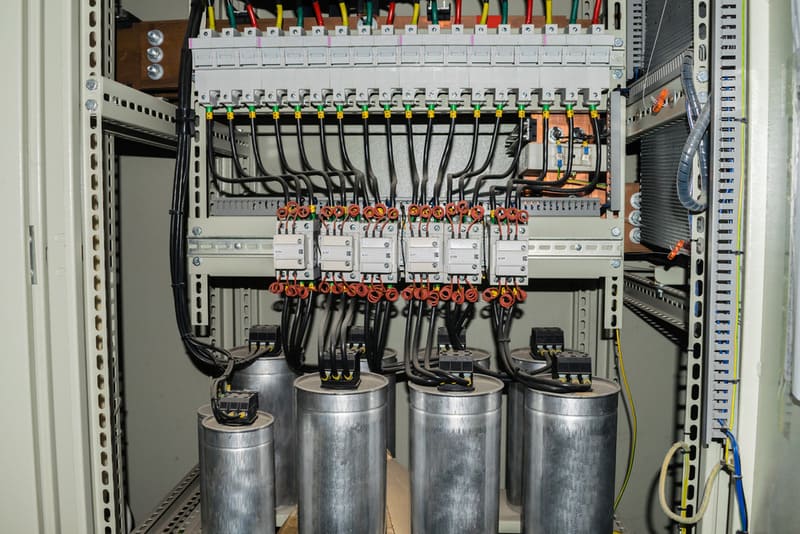
The operating principle of capacitor banks is to increase the cosφ coefficient, compensate for wasted reactive power when operating electrical equipment, thereby increasing useful active power.
The above two types of capacity are closely related to each other, expressed through the following formulas:

In there:
- S: Apparent power
- P: Active power
- Q: Reactive power
Normally the power source only provides a part of Q and the remaining necessary amount is produced by the capacitor to raise cosφ to help P increase.
Classification of capacitors
Capacitors are classified in many ways, the most common of which are by structure and voltage.
Classify capacitors according to structure
Dry capacitors are long, compact, cylindrical capacitors, popular in industrial electrical cabinets. Dry capacitors are used for power systems with voltage harmonic levels
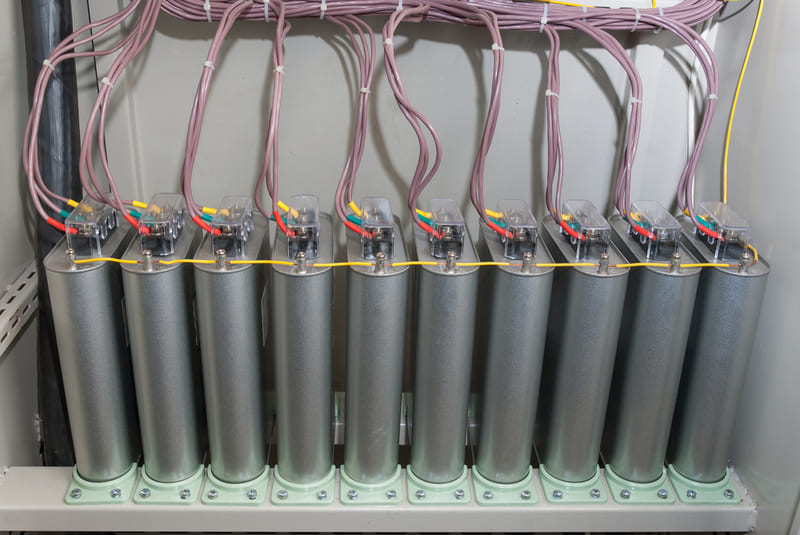
Oil capacitors are rectangular box-shaped capacitors with high durability and diverse capacities. Oil capacitors are used for all power compensation systems, especially in high capacity circuits with poor power quality and large harmonics due to their good harmonic resistance. The common capacity range of oil capacitors is 10kVAr to 50kVAr.
Classify capacitors according to voltage
When classifying capacitors according to voltage, there are 3 types: low voltage, medium voltage, high voltage used for 3 types of power grids respectively.
Low voltage capacitor
Low voltage capacitors are used for low voltage power grids with low cosφ capacity, used to compensate for reactive power, improve equipment performance and reduce electricity bill costs. There are two most common types of low-voltage capacitors: 1-phase low-voltage capacitors and 3-phase low-voltage capacitors.

Single-phase capacitors have voltage types of 230V and 250V. 3-phase capacitors have 250V voltage type for 220V circuits, 415V type for 380V standard voltage systems and 440V type for higher voltage systems. There are also 480V or 525V types,…
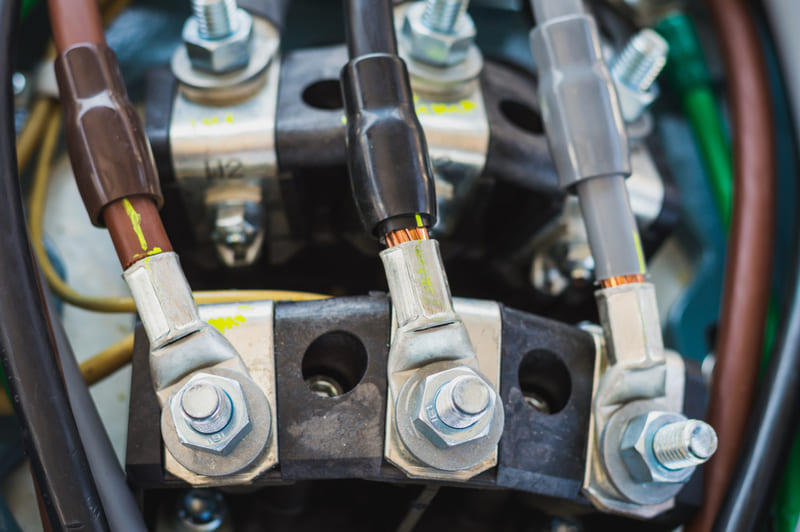
In terms of structure, a 3-phase capacitor has 3 poles connected to the source instead of 2 poles like a single-phase capacitor. In addition, the 3-phase capacitor is equipped with an explosion prevention barrier – a mechanism to automatically disconnect the capacitor when overloaded to avoid the capacitor exploding.
Medium voltage capacitor
Medium voltage capacitors used for medium voltage power grids have the ability to store and discharge electricity to stabilize the source voltage and compensate for reactive power for devices. Medium voltage capacitors have voltage levels from 3kV to 35kV and are divided into two types: 1-phase 2-ceramic type and 3-phase 3-ceramic type.
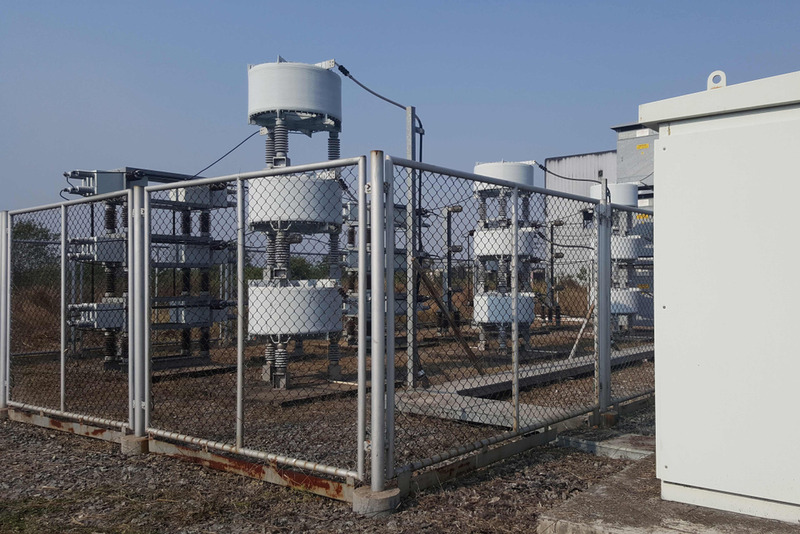
High voltage capacitor
High-voltage capacitors are electrical devices used to compensate for reactive power generated by inductive devices such as electric motors and transformers in high-voltage power systems. High voltage power systems usually have voltages from 110kV to 500kV.
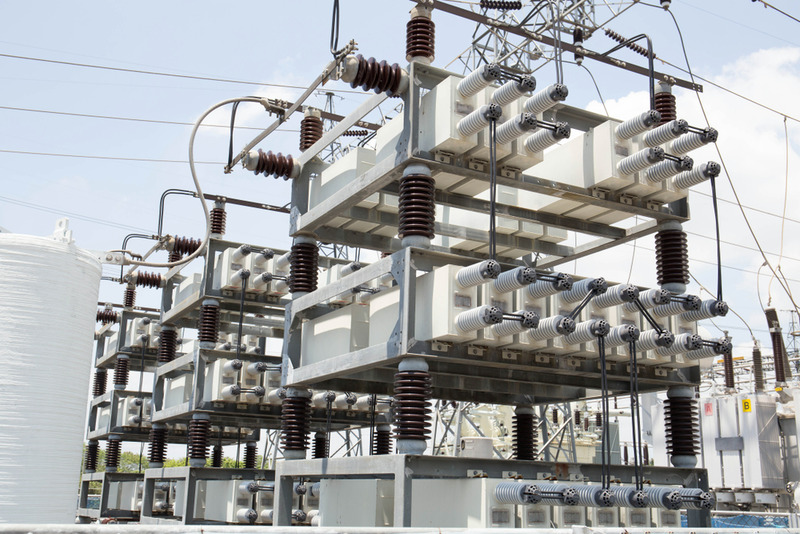
Application of capacitor banks in practice
A simple way to install a capacitor bank is to connect it directly to the electrical system in parallel with the load wire to compensate for reactive power. This is static compensation or background compensation. But currently this compensation method is no longer popular and is only used to compensate for small systems with a capacity of several tens of kW.
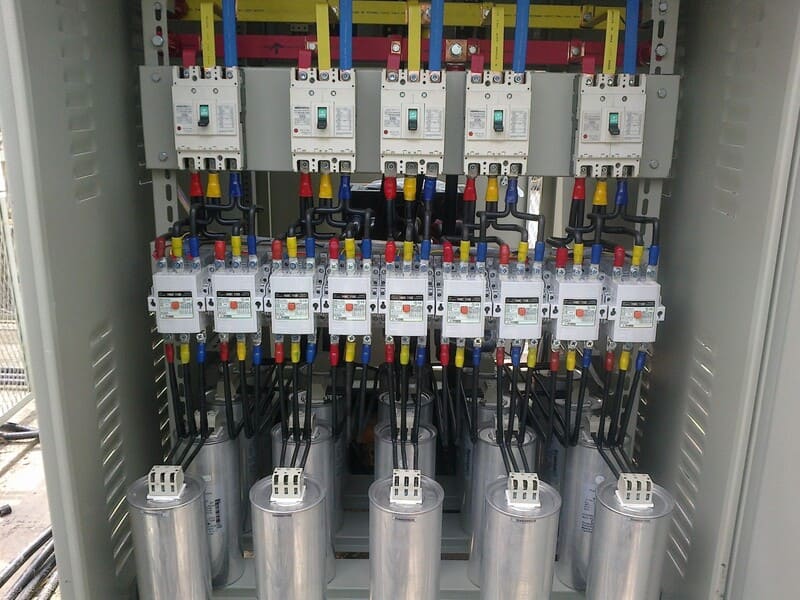
The most common application of power capacitors is installation in reactive power capacitor cabinets with many levels of capacitors. This cabinet is controlled via contactor and capacitor controller to automatically turn on and off capacitors. The inside of the cabinet usually includes: Capacitor controller, aptomat levels, contactors for capacitor levels, capacitors, often with additional reactors but need to be chosen to avoid installing the wrong reactor which will be counterproductive, electricity meter, capacitor shell, electrical wires and other supplies.
In reality, with complex compensation systems, it is necessary to use a capacitor controller.
Formula to calculate capacitor capacity
To choose a suitable capacitor for the load, it is necessary to calculate the load’s power P and the cosφ coefficient:
- Power factor of the load: Cosφ1 -> φ1 -> tgφ1 (before compensation, cosφ1 is small and tgφ1 is large).
- Power factor after compensation: Cosφ2 -> φ2 -> tgφ2 (after compensation, cosφ2 is large and tgφ2 is small).
- Reactive power to be compensated: Qb = P*(tgφ1 – tgφ2)
For example, there is a load with capacity P = 150kW
- The power factor before compensation is cosφ1 = 0.75 → tgφ1 = 0.9.
- The power factor after compensation is Cosφ2 = 0.95 → tgφ2 = 0.35.
- The reactive power to be compensated is Qb = 150*(0.9 – 0.35) = 82.5 kVAr
If for places where the load and capacity characteristics are unknown, we will choose the compensation capacity according to experience, which will usually compensate 50% to 60% of the transformer capacity.
See detailed calculations at: Instructions for calculating transformer capacitor capacity and load
How to choose a suitable capacitor for the system
How to choose a capacitor bank for application in different electrical systems greatly affects the performance of the capacitor as well as that electrical system in the future.
Install capacitors for small systems
The characteristics of small production systems are that the capacity is not high, the system is not too complicated and has almost no harmonics, and low reactive power. Whether or not to install capacitor banks depends on the area where the electrical system is located and the financial balance.
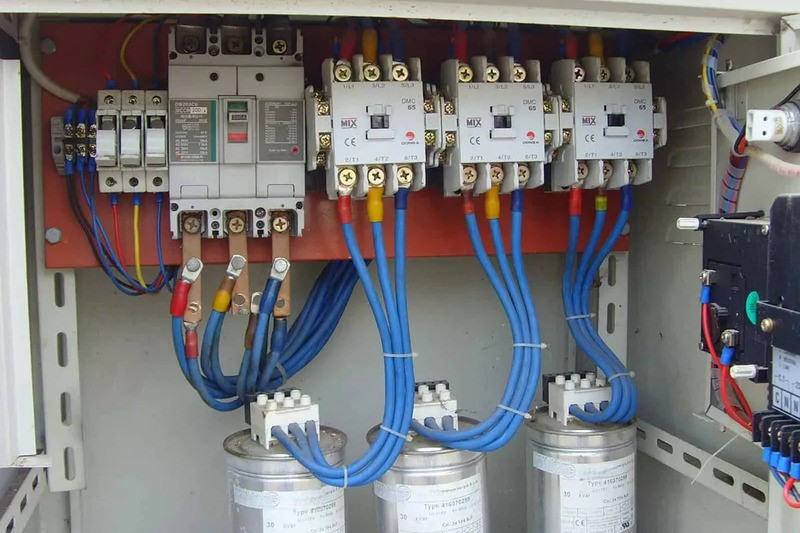
For small electrical systems, installing capacitor banks with the static compensation method is appropriate. The capacitor capacitor cabinet in this case has a fairly simple structure including the cabinet shell, 1 circuit breaker and 1 low capacity capacitor not larger than 10kVAr.
Install capacitor for medium system
The characteristics of the power system for production are both average electrical capacity, average reactive power, and small but small harmonics. This system definitely needs capacitor banks to save electricity, and if you don’t want to be fined, you need to install a capacitor bank with multiple levels.

Most units choose automatic capacitor banks to optimize operation and increase accuracy when switching capacitors on and off, increasing equipment durability. The automatic capacitor cabinet includes: Cabinet cover, automatic controller, circuit breaker for each capacitor level, contactor, capacitor bank and supporting devices.
Install capacitors for large systems
In large capacity power systems with high power consumption and reactive power, there is often a separate transformer station installed. Installing a capacitor bank for this system, in addition to the requirements as for a medium system cabinet, the division of capacitor levels is more complicated, the capacitor capacity is higher and most of the time it is necessary to install additional reactors to minimize harmonics falling on the capacitor, limit capacitor explosion, help increase the life of the capacitor and help the capacitor operate normally, stably and for a long time.
Instructions for connecting capacitors
There are two popular methods of installing capacitor banks in industrial electrical cabinets today: installing static capacitors and installing dynamic capacitors.
How to connect electrostatic capacitors
The static capacitor connection method uses one or more capacitors connected in parallel. The static compensation mechanism generates a constant amount of compensation power under all conditions. Users can control the capacitor manually or semi-automatically. The advantage of this method is that it is easy to install and low cost, but it is not very effective and easily causes energy loss.

Steps to install electrostatic capacitors:
- Step 1 – Install the circuit breaker: Correctly install the circuit breaker in the capacitor cabinet and correctly connect the phase and neutral wires to the source and load terminals.
- Step 2 – Connect the capacitor to the circuit breaker: Correctly connect the negative – positive poles of the capacitor to the phase – neutral wire, then connect the capacitor to the circuit breaker.
- Step 3 – Attach neutral wire (if any): Connect the neutral wire from the capacitor to the neutral wire of the source.
- Step 4 – Fix the capacitor: Mount the capacitor on the bracket or rail on the electrical cabinet.
- Step 5 – Test and operate the cabinet: Check the voltage at the connection points, observe the operation of the capacitor after energizing and monitor the capacity index, voltage,… of the system.
How to connect electrolytic capacitors
The dynamic capacitor connection method is to use capacitors with automatic controllers, increasing operating accuracy, automatically monitoring indicators and changing capacitor capacity when needed. This connection method helps the electrical system achieve high capacity stability, limiting excess compensation, but at high cost.
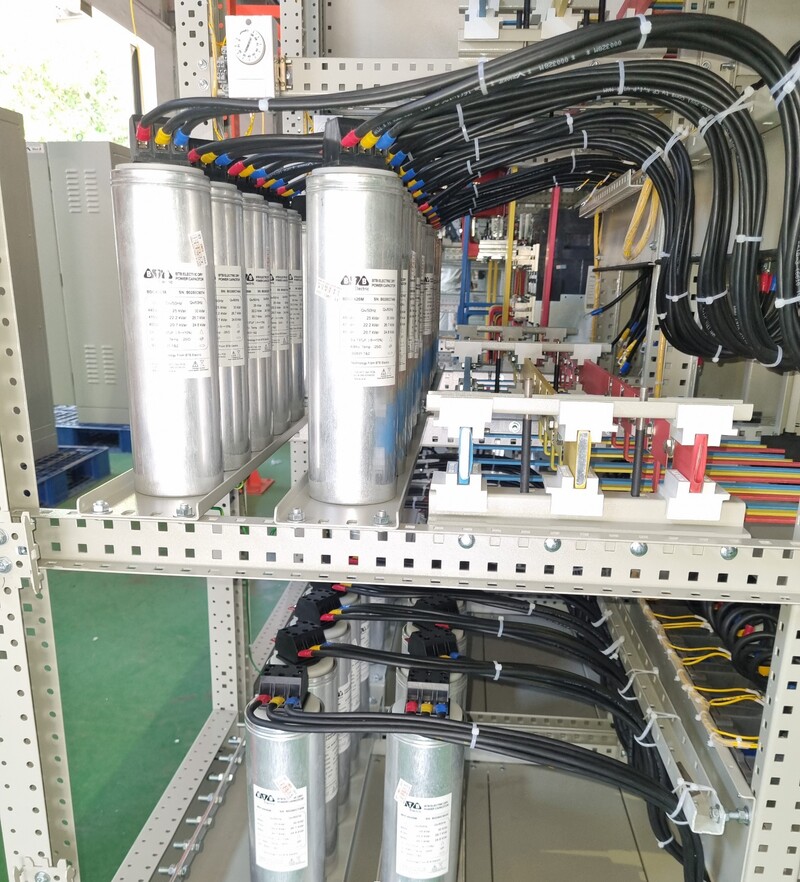
The steps to install a dynamic capacitor are similar to those of a static power system, with the addition of connecting the capacitor to the control system and adjusting the capacitor capacity. After installation is complete, it is necessary to check the power system, operation of capacitors and equipment, and test automatic control.
Some errors when installing capacitors
- Error of capacitor not automatically compensating: Error due to some types of relays automatically resetting to default value and need to be reset to appropriate parameters.
- Capacitor error cannot calculate cosφ value: Error due to incorrect connection of current signal or voltage signal to the relay. Need to rewire the relay correctly and try loading again.
- Relay error automatically resets to default: Need to reduce MBA voltage step or replace new relay.
- Error of exploded capacitor: Incorrect setting of voltage and current parameters or contact connection error.
- Relay error cannot control the capacitor when the current is too small: Error due to current transformer with large ratio or large current transformer angle error. It is necessary to replace the current transformer with a variable ratio suitable for the load and an error that meets the general standards of measurement techniques.
How to discharge capacitor
Before repairing, transporting, maintaining or replacing capacitors, it is necessary to discharge the capacitor to ensure safety and avoid fire and explosion. The only way to discharge the capacitor is to install resistors on the terminals and discharge.

Absolutely do not use spontaneous capacitor discharge methods such as using screwdrivers or alligator clips. These methods are all manual and cannot control the amount of discharged electricity, which can easily cause a fire and is dangerous for the operator.
After discharging the capacitor, it is necessary to check the voltage between the capacitor terminals with a multimeter, ensuring the voltage reaches 0. When discharging, it is necessary to wear protective clothing and a cool discharge location, away from water sources and flammable materials.
Choose KTH ELECTRIC capacitor
KTH ELECTRIC dry capacitor products are 3-phase dry capacitors, capacity range from 5 kVAr to 30 kVAr, suitable for a variety of capacitor cabinet systems. The product only loses less than 0.2W/kVAr, and has a durability of 130,000 hours of operation. The maximum current allowed through the capacitor is 1.5 In, the maximum starting current is 200 In and the capacitor is equipped with a current breaker in case of overvoltage.
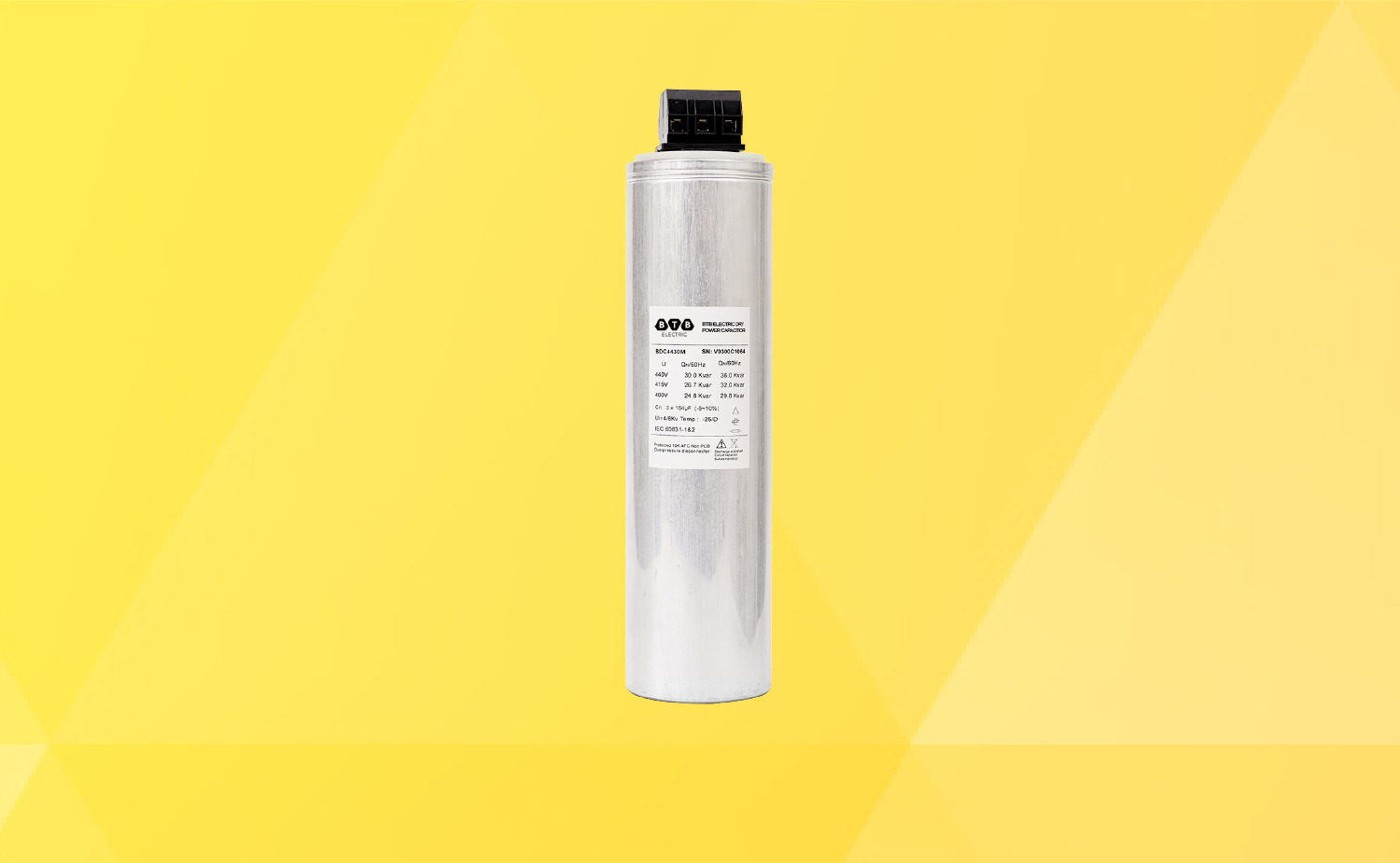
KTH ELECTRIC reactive power capacitors are present in many capacitor cabinet systems at medium and large manufacturing plants across the country, highly appreciated by customers for their product quality and good warranty policy. Refer to product information at: https://btb-electric.com/vi/tu-bu/
Some questions about capacitors
Question 1: Do capacitor banks save electricity?
Answer: Capacitors are devices that consume electricity and do not have the ability to save electricity. However, capacitor banks help improve the power factor cosφ, helping to reduce the system’s monthly electricity bill.
Question 2: Does household electricity need to use capacitors?
Household electrical systems with small scale and purely for domestic use will not need to use capacitors. This device is suitable for 3-phase power for production and commercial use.
Question 3: Should I choose dry capacitors or oil capacitors?
Small capacity electrical systems should use dry capacitors to save costs and installation area while still ensuring power quality. For large factory-scale electrical systems, priority is given to using oil capacitors with the advantage of being durable, operating at high capacity, and having poor power quality.


Nội dung được phát triển bởi đội ngũ truonglehongphong.edu.vn với mục đích chia sẻ và tăng trải nghiệm khách hàng. Mọi ý kiến đóng góp xin vui lòng liên hệ tổng đài chăm sóc: 1900 0000 hoặc email: hotro@truonglehongphong.edu.vn